Nursery Management: EYFS abroad - Early years export
Gabriella Jozwiak
Monday, September 22, 2014
The ever-evolving EYFS may have its challenges for childcare practitioners, but its excellent reputation is a big selling point for international nurseries across the world, says Gabriella Jozwiak

The Early Years Foundation Stage (EYFS), the UK's first comprehensive, statutory early education framework, now operates in international schools and nurseries as far afield as China, the United Arab Emirates (UAE), Cuba and Oman.
For UK expat parents, it means children follow a respected and familiar educational model, and that their children can easily move back into mainstream UK education if they return home. It is also popular for settings following an 'international' model, many of whom say the UK education system is world-renowned. Here, we look at four examples of the EYFS abroad.
THE INTERNATIONAL CHILDCARE AND EDUCATION CENTRE (ICEC), GREATER HELSINKI, FINLAND
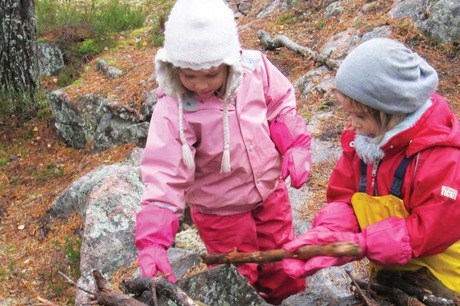
Former British nursery worker Sharon Auri set up ICEC in 1988 after moving to Finland with her Finnish partner. The company now has eight kindergartens caring for about 400 children aged from one to seven.
The nurseries are located around the capital, Helsinki, and staffed by about 80 practitioners. Not all are trained in the EYFS because of difficulties hiring qualified staff in the country. 'Most qualifications here are university-based, unless it's for a general assistant,' says Ms Auri. 'That leaves a strange gap in the middle.'
To overcome this, the organisation offers new hires four months of EYFS training in-house. It also runs NVQ programmes, which are converting into the new Early Years Educator qualification this month, as well as the higher national diploma in childcare. 'The awarding body, Pearson, comes over and inspects us twice a year,' says Ms Auri. As well as following the full qualification, students have to learn Finnish regulations on child protection and health and safety.
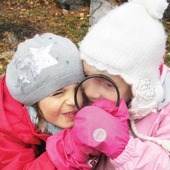 Finnish children are required to do four hours a day of pre-school, called esikoulu, from age six. Ms Auri says the Finnish style of teaching is 'studious, not play based'. For this reason she prefers the EYFS, as do the parents. 'The parents love the EYFS because it's so creative,' she says. 'Our interpretation of it is that it celebrates all the different learning styles children have. It also takes into account special educational needs (SEN), which aren't taken into account in Finnish daycare - most SEN children go to separate daycare.'
Finnish children are required to do four hours a day of pre-school, called esikoulu, from age six. Ms Auri says the Finnish style of teaching is 'studious, not play based'. For this reason she prefers the EYFS, as do the parents. 'The parents love the EYFS because it's so creative,' she says. 'Our interpretation of it is that it celebrates all the different learning styles children have. It also takes into account special educational needs (SEN), which aren't taken into account in Finnish daycare - most SEN children go to separate daycare.'
Because children stay in the nursery up to age seven, nursery staff teach Key Stage 1 (KS1) curriculum to the fiveand six-year-olds. Ms Auri says this works well because staff maintain the daycare ratios at this level, meaning children get more intensive tuition than they would in a UK school. 'If you watch the five-year-olds in KS1 with one adult teaching seven children, it makes a total difference,' she says.
Parents are all international families who have English as a common language. For this reason the nurseries celebrate festivals from all over the world, including St Patrick's day and Chinese New Year, as well as Finnish holidays such as the country's independence day. They mark this by making blue and white Finnish flags, lighting candles and learning the country's history.
Helsinki's proximity to the Arctic Circle (it is 400 miles away) means that from August to May days can have only six hours of daylight, while from May to August the sun never sets. Auri says the long, cold winters mean staff have to care for children differently. 'You have to alter the times you go outside because it can get dark at 3pm, and we need good outdoor lighting in the outside space,' she says. 'We have to help some non-Finnish parents get to grips with dressing children for temperatures of -15degC.'
The nurseries encourage children to make the most of the snowy weather by taking them sledging, skiing and snow hiking. One setting in the chain has its own outdoor ice skating rink.
In summer, staff are keen for the children to spend as much time outside as possible in the nurseries' gardens and in public parks. 'We're all glad when spring gets here,' says Ms Auri.
BRITISH ORCHARD NURSERY, DUBAI, UAE
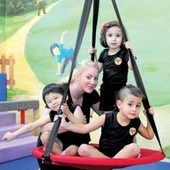
With 14 settings, British Orchard Nursery is the largest provider of early years education in UAE. Set up in 2006 by entrepreneur Vandana Gandhi, it caters for children aged up to four years old and has always followed British educational guidelines.
Staff are of mixed nationality, but are all qualified to teach the EYFS. They have British qualifications, ranging from Level 3 NVQs to PGCEs and masters in education. The settings slightly adapt the framework to match the culture of UAE - for example, by offering Arabic lessons for older children or Islamic studies.
The settings encourage learning through play and active participation. For children younger than 18 months they follow ratios of one adult to two children for non-walking children, and one adult to three children if they are walking. From 18 months to two years, they have one adult for four children, one adult to six children for twoto three-year-olds, and one to nine for threeto four-year-olds.
Staff write personal assessments for each child on a termly basis to make sure they are meeting individual needs. Business support manager Emma Addy says following the EYFS allows staff to 'offer personalised learning for the children, one that first ensures the children are being taught at the correct level and then challenges them, but provides plenty of opportunity for success'. She particularly rates the Plan, Do, Review strategy. 'This is recommended for the EYFS age group as it is highly associated with independent learning,' she says.
Staff keep up to date with the latest EYFS developments by attending training in-house. Nursery manag- ers are responsible for hiring external trainers to deliver continuing professional development courses throughout term-time. Topics recently covered in training include circle time activities, first aid and water play. The local government in UAE sponsors some of this training.
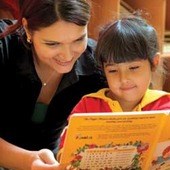 Ms Addy says most early years providers in UAE model their services on British and international curricula because UAE has no set education system. 'Some devise their own curricula to cater for the wide variety of nationalities who live in the UAE,' she says. 'This way, should I choose to return to the UK, my children have been in a British curriculum school in Dubai and can transition back into the same curriculum school in the UK very easily.'
Ms Addy says most early years providers in UAE model their services on British and international curricula because UAE has no set education system. 'Some devise their own curricula to cater for the wide variety of nationalities who live in the UAE,' she says. 'This way, should I choose to return to the UK, my children have been in a British curriculum school in Dubai and can transition back into the same curriculum school in the UK very easily.'
The nursery group prides itself on ensuring children are kept fit and healthy through its GymJuniorz scheme, conceived by Ms Gandhi. The scheme provides children with gymna- stics and fitness lessons in a tailored gym at each setting. Ms Addy says the facility is particularly important in UAE because the temperatures are so high in the summer months that outdoor playtime has to be limited. Highs of more than 40 degsC are common, and even in winter the temperature is usually above 20 degsC. As a result, nursery buildings are all air-conditioned.
The nursery also does parent-outreach work by running seminars, workshops and talks for parents about issues such as childcare and home education. It also holds parent and child daytrips. Recently, excursions have included visits to a fire station, library, dairy farm and an animal sanctuary.
THE BRITISH SCHOOL OF GUANGZHOU, GUANGZHOU, CHINA
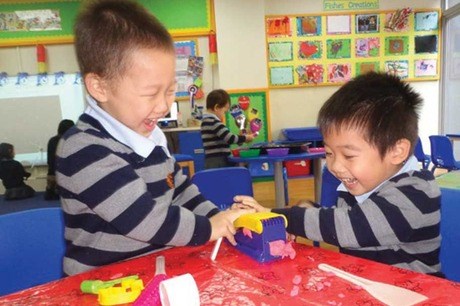
The Lakefront Early Years Campus of this large international school is located on in the outskirts of Guangzhou city. Its 14 British-qualified teachers care for more than 260 children split in to pre-nursery, nursery and Reception classes from ages two to five. Ratios are set at one practitioner to three, one to five and one to ten children respectively.
The school began delivering the EYFS seven years ago as it sought to align itself more closely with British education standards. It now delivers the framework exclusively, with an additional daily Chinese lesson. The school also has a primary and secondary school catering for 900 pupils in total.
Early years staff are all British and have a minimum of two years' experience delivering the EYFS in the UK, with two exceptions. One is a speech and language therapist with three years' UK early years experience. Another is an Australian who has also worked in the UK.
These professionals are supported by mainly Chinese teaching assistants. Teaching assistants are required to hold a university degree, have at least two years' relevant experience, and high-level English language skills.
Head of lower school Katherine Weir-Davis says the school maintains standards by recruiting staff directly from the UK. Two employees are also responsible for keeping the team's curriculum development and teaching and learning standards current. 'It is their responsibility to ensure we are keeping up to date with UK initiatives,' she says. 'We send staff on EYFS courses held across Asia and we share ideas across our family of 31 schools.' In 2013 the school was taken over by a global education provider called Nord Anglia Education, which has 31 schools worldwide.
Practitioners follow all aspects of the EYFS, including completing all EYFS assessments and producing learning journeys for each child. This includes UK recommendations and policies for child protection and health and safety.
Children can attend the setting from 8am until 3pm from Monday to Friday. Housed in the ground floor of an apartment block in a gated compound, it has a large space for outdoor learning. Ms Weir-Davis says Guangzhou's hot, wet springtime can keep pupils indoors where there is air conditioning, but milder, dry winters provide plenty of time for outdoor play. The nursery recognises both British and Chinese national holidays.
Parents of the nursery's children are all foreign passport holders. As China's third largest city, Guangzhou is home to many large international companies such as Dyson, Nike and Adidas, where pupils' parents work. By law, the school is not allowed to accept children of Chinese nationals, although some Chinese children do attend if their parents have worked abroad and gained other passports.
Ms Weir-Davis says parents prefer the EYFS system because Chinese early years settings offer more structured and less play-focused care. 'Parents believe the UK education system to be one of the best in the world and will pay high school fees to give their child the opportunity to follow the UK curriculum,' she says. 'I believe what visitors see now would be identical to settings in the UK.'
INTERNATIONAL SCHOOL OF HAVANA, CUBA
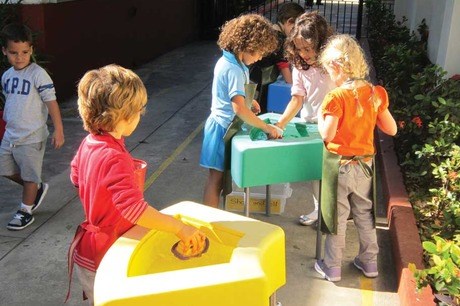
The early years centre within this international school caters for about 65 children aged from two-and-a-half to five years old. The school was founded by a British expat in 1965 for children of diplomatic staff and has always followed English teaching practices. It also has a lower and secondary school.
Children are grouped into three levels, Early Years 1, 2 and 3, depending on their age. The school's 11 early years practitioners all deliver the EYFS to a ratio of seven children to one care provider. Early years co-ordinator Amaryllis Ramos says the EYFS has a strong reputa- tion in the school. 'We consider the EYFS to be the result of very high-qualified professionals' work, where updated research and constant analysis and feedback is put into practice,' she says.
The team of mainly Cuban practitioners do not all hold British qualifications and have not all received training in the EYFS. They rely on the resources, information and updates provided on the 4Children website Foundation Years to stay up to date. Ms Ramos says the team focuses on using parts of the framework related to curriculum, but not parts specific to British policy such as child protection. 'I am afraid we are not always as updated as we would like to be,' she says.
The team of international staff also incorporate the International Primary Curriculum (IPC), which is based on the UK national curriculum, into their teaching. Ms Ramos says the school decided to add this two years ago to help smooth transitions from the early years school to primary level. 'We use the EYFS guidance to drive our curriculum, but IPC gives us the themes of work and provides us with excellent activities and ideas,' she says. Some themes used by the team include plants and flowers, 'all about me', animals and 'going places'. Ms Ramos and her colleagues also use the Jolly Phonics programme to teach phonics, and Oxford Reading Tree resources to teach reading to four-year-olds and up.
These are taught using the early years campus library and media centre, where children can use computers. Lessons and play also take place outside in the playgrounds and garden area.
As education in the country is 100 per cent subsidised by the Cuban government, none of the children attending the setting are Cuban - only foreign nationals are allowed to study at fee-paying schools. Ms Ramos says parents choose the nursery because they want their children to be bilingual in English and Spanish, rather than because of the curriculum. 'Our school is the only option parents have for their children to learn English as a second language and get instructed in English,' she says. 'Many of our pupils belong to mobile families who study in an international school to give them the opportunity of moving into other countries and going to another international school.'




